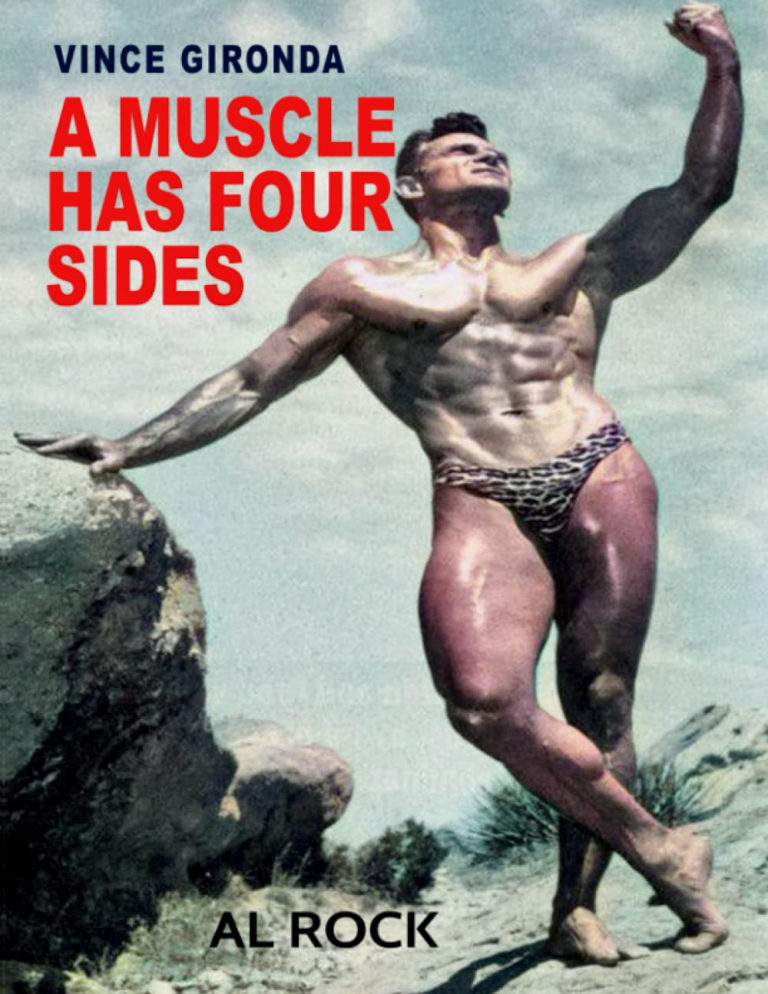STRENGTH SENSEI BOOKSHELF
A Muscle has Four Sides
A closer look at a bodybuilding classic
You always come back to the source, advice that is especially true when examining Vince Gironda’s body of work. Many bodybuilding writers have discussed Gironda’s training methods, but if you’re serious about learning from this legend, you need to read his original work. This includes his popular books, such as the 1982 version of A Muscle has Four Sides.
Gironda was one of Charles Poliquin’s favorite bodybuilding coaches, and deservedly earned his nickname “The Iron Guru.” Just as Poliquin earned his reputation as “Strength Sensei” by training Olympians and professional athletes, Gironda had coached many bodybuilders to greatness. Among his success stories was the first Mr. Olympia, Larry Scott. Scott won bodybuilder’s most coveted prize twice, 1965 and 1966.
There was also Mohamed Makkawy, an Egyptian-born bodybuilder known for his symmetrical physique. Twice Makkawy earned the runner-up position in the Olympia. He also defeated Lee Haney, who eventually won the Mr. Olympia eight times. Arnold Schwarzenegger and Lou “The Incredible Hulk” stopped by Gironda’s gym in Studio City to soak in the hardcore training atmosphere. But there’s more.

Gironda was the first, or at least one of the first, celebrity trainers. Among his Hollywood clientele were Cher, Clint Eastwood, James Garner, Burt Reynolds, Carl Weathers, and Denzel Washington. His success with these popular entertainers earned Gironda another nickname, “Trainer to the Stars.”
The premise of A Muscle has Four Sides is that to achieve the complete development of a muscle, a variety of exercises for each muscle must be performed. “By doing four exercises, one for each part of the muscle, you will achieve the fastest possible growth,” says Gironda. Combined with proper nutrition, Gironda says this approach will enable the muscle to “grow at the fastest possible rate.”
The basic workout design in this program is to perform four exercises, one set each, for a single muscle group. Twelve reps for each exercise are prescribed, except for the calves, which are performed for 20 reps. He also recommends that you tense the muscle hard at the peak contraction point of each repetition – a method he calls inter-muscular contraction. No direct abdominal training is prescribed, as he says doing so would decrease the effectiveness of the program to build muscle.

To be clear, this is a hardcore, advanced workout, requiring a considerable time commitment. You train six days a week, performing the same workout twice a day, allowing four hours between workouts. For example, on Monday (Day 1), you train back, chest, and shoulders; wait at least four hours, then repeat the workout. On Tuesday (Day 2), you train triceps, biceps, and forearms in this manner; and on Wednesday (Day 3), you train thighs and calves. You repeat Day 1 on Thursday, Day 2 on Friday, and Day 3 on Saturday. Sunday would be a day of much needed rest.
Beyond the basic loading parameters of the workout, Gironda provides photos of him performing the exercises, along with detailed descriptions of each exercise. It’s critical that you read these descriptions carefully. Many of these exercises are unique, and to this day, rarely performed by most bodybuilders.
There is only one paragraph devoted to how to eat while performing this workout, but Gironda covers that topic extensively, along with supplementation, in other publications.
A Muscle has Four Sides is a book about how a bodybuilding legend would train you to develop maximum muscle mass quickly. It’s a bodybuilding classic and deserves a place in any Iron Game library. (TSS)
[The original version of A Muscle has Four Sides by Vince Gironda is out of print, but a print replica is available through Amazon.com.]
